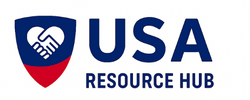When financial stress hits, most people think of federal programs like SNAP, Medicaid, or unemployment benefits. But many states offer their own hardship programs that go beyond federal aid. These state-level initiatives are designed to help residents cover rent, utilities, medical costs, transportation, and other essentials during times of crisis. The problem is, many of these programs fly under the radar.
Whether you’re facing eviction, recovering from a disaster, or dealing with a sudden loss of income, here are state hardship programs worth exploring, especially if you’ve already exhausted federal options.
1. Emergency Rental Assistance and Eviction Prevention
Many states continue to offer rental assistance through local housing departments or community action agencies. While federal Emergency Rental Assistance (ERA) funds have slowed, states like California, New York, and Illinois have extended support using local budgets.
Some programs offer:
- One-time grants to cover past-due rent
- Legal aid for tenants facing eviction
- Mediation services between landlords and renters
- Utility bill assistance tied to housing support
Check with your state’s housing authority or visit USA.gov’s hardship portal for updated links.
2. Utility Relief and Energy Crisis Programs
Beyond LIHEAP, many states offer their own energy assistance programs. For example:
- Michigan’s State Emergency Relief (SER) program helps with heating, electricity, and water bills.
- Texas offers the Comprehensive Energy Assistance Program (CEAP) through local agencies.
- Pennsylvania’s Crisis Assistance Program provides emergency heating support during winter months.
Some states also offer weatherization services to reduce future energy costs. These programs may cover insulation, furnace repairs, or energy-efficient upgrades.
3. Transportation Hardship Assistance
If you’ve lost access to reliable transportation, some states offer help with:
- Bus passes or transit vouchers
- Car repair grants for low-income workers
- Gas cards for medical appointments or job interviews
- Ride-share credits for emergency travel
Programs vary widely, but community action agencies and workforce development offices often manage transportation aid. In Minnesota, for example, the Transportation Assistance Program helps job seekers get to interviews and training sessions.
4. Medical and Prescription Support
States like New York, Massachusetts, and Washington offer supplemental medical assistance for residents who fall through the cracks of Medicaid. These programs may include:
- Emergency prescription coverage
- Medical transportation
- Dental and vision care for uninsured adults
- Mental health crisis support
Some states also partner with nonprofit clinics to provide sliding-scale services. If you’re uninsured or underinsured, ask your local health department about state-funded options.
5. Disaster Recovery and Crisis Grants
After natural disasters, states often activate emergency relief funds separate from FEMA. These may include:
- Temporary housing stipends
- Food replacement benefits
- Clothing and household goods vouchers
- Small business recovery grants
For example, Florida’s Disaster SNAP (D-SNAP) program provides food assistance to households affected by hurricanes. Other states offer similar programs during floods, wildfires, or severe winter storms.
6. Hardship-Based Cash Assistance
Some states offer short-term cash grants for families in crisis. These are often managed through Temporary Assistance for Needy Families (TANF) but may include additional state-funded options.
Examples include:
- California’s CalWORKs Immediate Need payments
- Michigan’s State Emergency Relief cash grants
- Georgia’s TANF Emergency Assistance for domestic violence survivors
These programs typically require proof of income, residency, and documentation of the hardship. Funds may be used for rent, food, transportation, or other urgent needs.
7. Legal and Housing Advocacy
States like Massachusetts, New Jersey, and Maryland fund legal aid programs that help residents fight eviction, apply for benefits, or resolve debt disputes. These services are often free and available through community legal clinics or bar association partnerships.
Some states also offer housing navigators who help residents apply for vouchers, find affordable units, or negotiate with landlords.
State hardship programs are often overlooked, but they can provide critical support when federal aid falls short. From rent relief and utility grants to transportation and medical assistance, these programs are designed to meet local needs with flexible solutions.


Leave a Reply